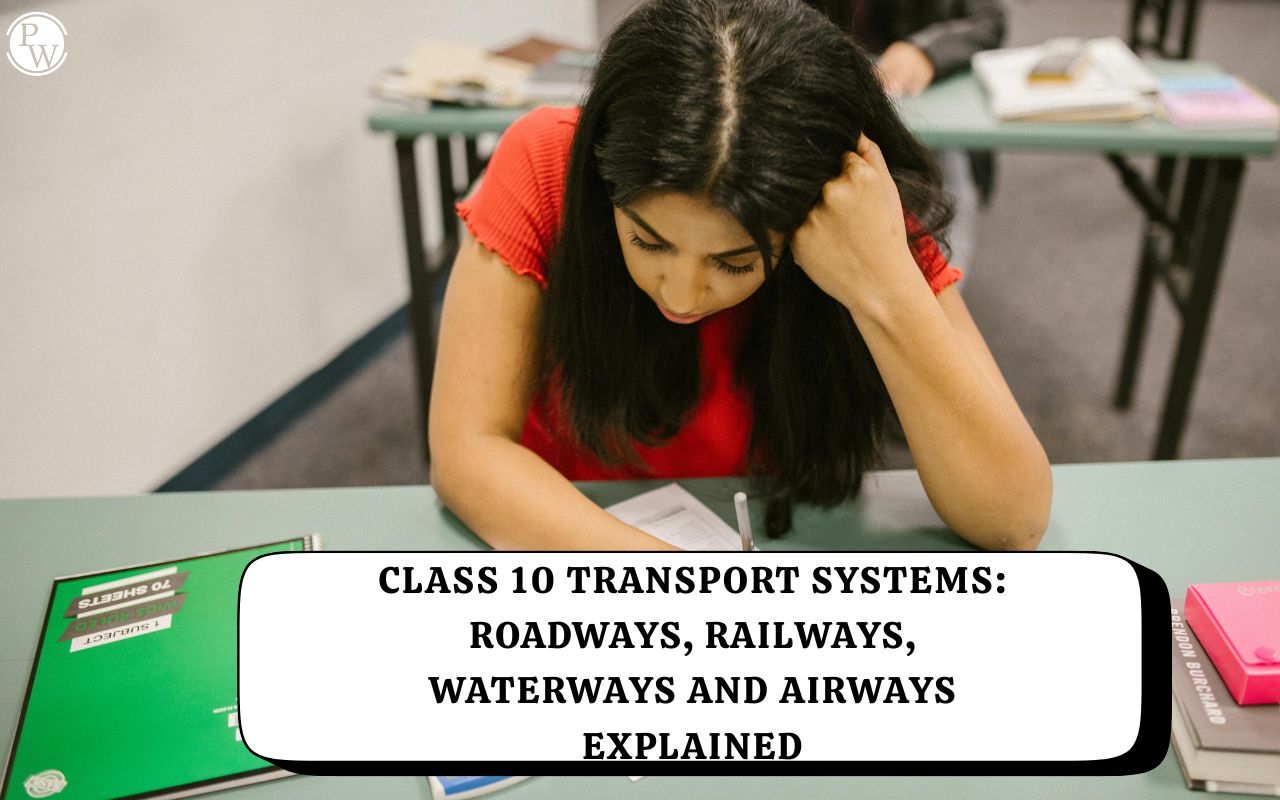

What Is Water Pressure?
Water pressure is the force exerted by a fluid (in this case, water) on its surroundings. It's commonly measured in units such as pounds per square inch (psi) or pascals (Pa). Water pressure is responsible for the flow of water through pipes and hoses, making it a crucial factor in many applications, from household plumbing to industrial processes.
The Formula for Water Pressure
The formula for calculating water pressure is straightforward:
Pressure (P) = Force (F) / Area (A)
Where:
- - P represents pressure (in psi or Pa).
- - F is the force exerted by the fluid (in newtons, N).
- - A is the area over which the force is applied (in square meters, m²).
Calculating Water Pressure Example
Let's say you have a water tank with a force of 500 N acting on an area of 2 m². Using the formula, you can calculate the water pressure:
P = 500 N / 2 m²
P = 250 Pa
So, the water pressure in this scenario is 250 pascals.
Also Read - Percent Error Formula
Working Of Water Pressure
Water pressure is the force exerted by a fluid, in this case, water, on its surroundings. It is a fundamental concept in fluid dynamics and is influenced by several factors. Here's how water pressure works:
- Depth: One of the primary factors influencing water pressure is depth. As you go deeper underwater, the weight of the water above you increases, leading to higher pressure. This increase in pressure is due to the gravitational pull on the water molecules in the column above.
- Density of the Fluid: The density of water, which is about 1000 kilograms per cubic meter (kg/m³) for freshwater, affects water pressure. Denser fluids create more pressure as the molecules are packed closer together.
- Gravitational Force: The acceleration due to gravity (g) plays a significant role in water pressure. On Earth, this value is approximately 9.81 meters per second squared (m/s²). The higher the gravitational force, the greater the water pressure at a given depth.
- Formula for Water Pressure: The pressure (P) at a specific depth (h) in a fluid can be calculated using the formula:
Pressure (P) = Density of Fluid (ρ) * Gravitational Acceleration (g) * Depth (h)
This formula shows that pressure increases linearly with depth and is directly proportional to the density of the fluid and gravitational acceleration.
- Pressure Variations: Water pressure can vary significantly depending on depth. For example, at the surface of the ocean, the pressure is close to atmospheric pressure (around 101,325 pascals or 14.7 pounds per square inch). As you descend into the ocean, the pressure increases by approximately 1 atmosphere (approximately 101,325 pascals) for every 10 meters of depth.
- Direction of Pressure: Water pressure acts equally in all directions. This means that when you are submerged in water, you feel pressure not only from above but also from all sides. This principle is why submarines and underwater structures must be designed to withstand pressure from all directions.
- Applications: Water pressure has numerous practical applications, including in plumbing systems to provide water to buildings, in industrial processes, for firefighting, and in hydraulic machinery. It's also a critical consideration in underwater exploration and construction.
- Pressure and Gas: It's important to note that water pressure is different from air pressure. Water is much denser than air, so the pressure change with depth is more significant in water. In contrast, air pressure decreases with increasing altitude, but the change is much less pronounced than in water.
In summary, water pressure is the result of the weight of the water column above a specific depth, and it depends on factors like depth, density of the fluid, and gravitational acceleration. Understanding water pressure is crucial for various applications, from designing safe structures to ensuring efficient water distribution in plumbing systems.
Also Read - Power Factor Formula for Single Phase
Importance of Water Pressure
Water pressure plays a critical role in various aspects of our lives. It ensures a steady flow of water to our homes, allowing us to take showers, wash dishes, and perform other essential tasks. In industries, precise control of water pressure is necessary for manufacturing processes, firefighting, and more.
Applications
- Domestic Plumbing Systems:
- *Example:* In residential plumbing, water pressure is vital for ensuring that water flows effectively through faucets, showers, and appliances like washing machines. A sufficient water pressure level ensures a steady and consistent water supply in homes.
- Firefighting:
- *Example:* Firefighters use powerful water hoses that rely on high water pressure to extinguish fires. The force generated by the water pressure allows them to direct water over long distances and reach high-rise buildings.
- Hydraulic Systems:
- *Example:* Hydraulic systems in heavy machinery, such as excavators and bulldozers, use water pressure to control various functions. For instance, a hydraulic arm on an excavator relies on water pressure to lift heavy objects.
- Car Washes:
- *Example:* Automatic car washes employ water pressure to spray and clean vehicles efficiently. The strong water jets remove dirt and debris from the surface of cars, providing a thorough cleaning.
- Water Supply to Tall Buildings:
- *Example:* In skyscrapers and tall buildings, water pressure is essential to pump water to upper floors. High water pressure ensures that residents on higher levels receive adequate water flow for daily needs.
- Manufacturing Processes:
- *Example:* Industries use water pressure in various manufacturing processes. For instance, water jets under high pressure can cut materials like metal and plastic with precision in a process called water jet cutting.
- Dental Tools and Equipment:
- *Example:* Dentists use water pressure in dental tools like dental drills and scalers. The water spray helps keep the tool cool and removes debris during dental procedures.
- Pressure Cookers:
- *Example:* Pressure cookers use the concept of water pressure to cook food faster. By increasing the pressure inside the cooker, the boiling point of water is raised, leading to quicker cooking times.
- Submarines and Underwater Exploration:
- *Example:* Submarines use water pressure resistance to navigate and explore the depths of the ocean. The hull of a submarine is designed to withstand immense water pressure at great depths.
- Dams and Hydroelectric Power Generation:
- *Example:* Dams harness the force of water pressure to store and release water for generating electricity. Water under pressure flows through turbines, turning generators to produce electricity.
These are just a few examples of how water pressure is applied in various real-world scenarios. Water pressure's versatility makes it a critical factor in industries, daily life, and scientific research. Understanding and controlling water pressure is essential for optimizing these applications.
Also Read - Length Contraction Formula
Solved Examples
Example 1:
Calculate the water pressure at the bottom of a swimming pool that is 3 meters deep. The density of water is 1000 kg/m³.
Solution:
Depth (h) = 3 meters
Density of water (ρ) = 1000 kg/m³
Pressure (P) = ρ * g * h
P = 1000 kg/m³ * 9.81 m/s² * 3 m
P = 29430 Pa
Example 2:
A hydraulic jack exerts a force of 5000 N over an area of 0.02 m². Calculate the water pressure applied by the jack.
Solution:
Force (F) = 5000 N
Area (A) = 0.02 m²
Pressure (P) = F / A
P = 5000 N / 0.02 m²
P = 250000 Pa
Example 3:
If a scuba diver is 20 meters below the surface of the ocean, calculate the water pressure at that depth. Assume the density of seawater is 1025 kg/m³.
Solution:
Depth (h) = 20 meters
Density of seawater (ρ) = 1025 kg/m³
Pressure (P) = ρ * g * h
P = 1025 kg/m³ * 9.81 m/s² * 20 m
P = 201225 Pa
Example 4:
A fire hose nozzle has an opening with an area of 0.02 m². If water exits the nozzle at a velocity of 10 m/s, calculate the force exerted by the water.
Solution:
Area (A) = 0.02 m²
Velocity (v) = 10 m/s
Force (F) = ρ * A * v²
F = 1000 kg/m³ * 0.02 m² * (10 m/s)²
F = 2000 N
Example 5:
You have a water tank with a surface area of 5 m². If the water pressure inside the tank is 5000 Pa, calculate the force exerted by the water on the tank's walls.
Solution:
Pressure (P) = 5000 Pa
Area (A) = 5 m²
Force (F) = P * A
F = 5000 Pa * 5 m²
F = 25000 N
Example 6:
Calculate the water pressure at the bottom of a 10-meter-tall water tower. Assume the density of water is 1000 kg/m³.
Solution:
Height (h) = 10 meters
Density of water (ρ) = 1000 kg/m³
Pressure (P) = ρ * g * h
P = 1000 kg/m³ * 9.81 m/s² * 10 m
P = 98100 Pa
Example 7:
A scuba diver descends to a depth of 30 meters in a freshwater lake. Calculate the water pressure at that depth. Assume the density of freshwater is 1000 kg/m³.
Solution:
Depth (h) = 30 meters
Density of freshwater (ρ) = 1000 kg/m³
Pressure (P) = ρ * g * h
P = 1000 kg/m³ * 9.81 m/s² * 30 m
P = 294300 Pa
Example 8:
A hydraulic press applies a force of 200,000 N over an area of 0.1 m². Calculate the water pressure created by the hydraulic press.
Solution:
Force (F) = 200,000 N
Area (A) = 0.1 m²
Pressure (P) = F / A
P = 200,000 N / 0.1 m²
P = 2,000,000 Pa
Example 9:
Calculate the water pressure at a depth of 15 meters in a swimming pool filled with seawater. Assume the density of seawater is 1025 kg/m³.
Solution:
Depth (h) = 15 meters
Density of seawater (ρ) = 1025 kg/m³
Pressure (P) = ρ * g * h
P = 1025 kg/m³ * 9.81 m/s² * 15 m
P = 150668.25 Pa
Example 10:
A water tank has a pressure of 4500 Pa. If the tank has a surface area of 8 m², calculate the force exerted by the water inside the tank.
Solution:
Pressure (P) = 4500 Pa
Area (A) = 8 m²
Force (F) = P * A
F = 4500 Pa * 8 m²
F = 36000 N
Example 11:
A water jet cutter operates at a pressure of 3000 psi (pounds per square inch) and has a nozzle with an area of 0.005 m². Calculate the force exerted by the water jet.
Solution:
Pressure (P) = 3000 psi = 20684.3 kPa (since 1 psi = 6.89476 kPa)
Area (A) = 0.005 m²
Force (F) = P * A
F = 20684.3 kPa * 0.005 m²
F = 103.42 kN (kilonewtons)
Example 12:
A water tower has a height of 25 meters. Calculate the water pressure at the base of the tower. Assume the density of water is 1000 kg/m³.
Solution:
Height (h) = 25 meters
Density of water (ρ) = 1000 kg/m³
Pressure (P) = ρ * g * h
P = 1000 kg/m³ * 9.81 m/s² * 25 m
P = 245250 Pa
Water Pressure Formula FAQs
Why does water pressure vary in different locations?
What are common units for measuring water pressure?
How can I increase water pressure in my home?
What is the significance of water pressure in hydraulic systems?
Can water pressure be too high?
What is the relationship between water pressure and depth in a water body?
How do you measure water pressure accurately?
What is absolute pressure?












